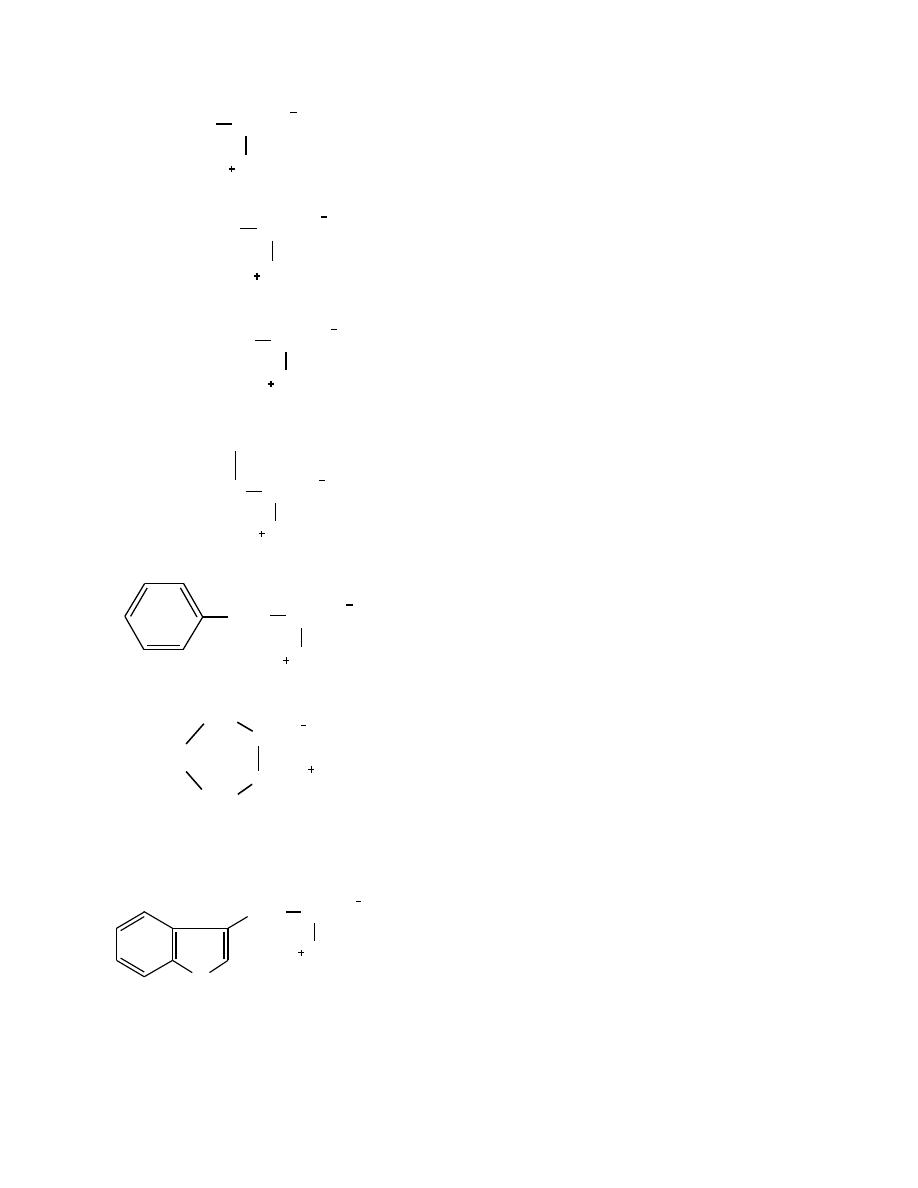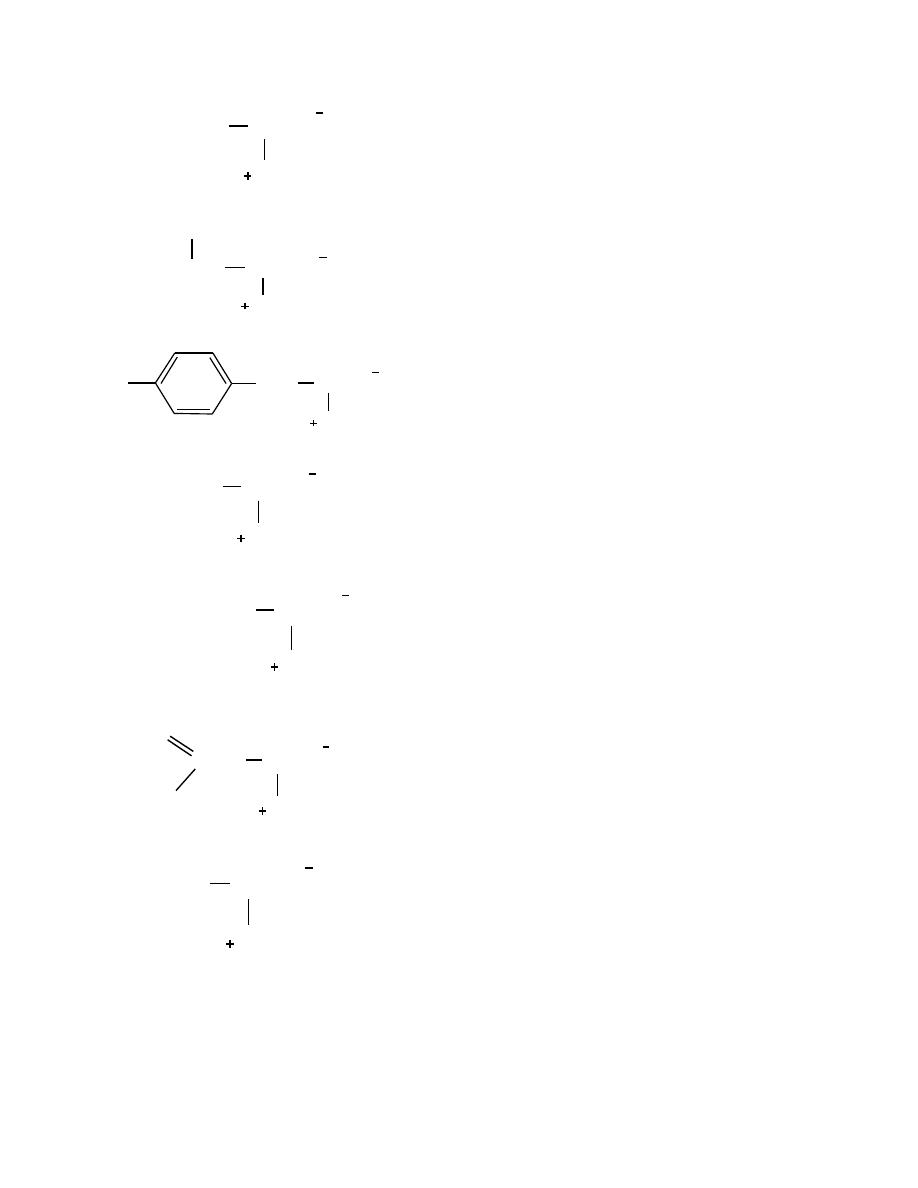
1
Amino Acids
As their name indicates, amino acids are compounds that contain an amino
group and a carboxylic acid group. The amino acids in proteins have the amino group
bonded to the α carbon of the carboxylic acid. As a result, they are called α-amino
acids.
The amino group of an amino acid is sufficiently basic that it will react with
the carboxylic acid group. This internal neutralization reaction forms a salt or zwitter
ion, as shown in figure below, this is the structure of amino acids in a solid.
NH
3
CHC
R
O
O
The zwitter ion structure of an α-amino acid
The 20 α-amino acids that make up proteins differ in the nature of the R
group bonded to the α carbon. This R group is called the amino acid side chain. These
side chains differ in size, shape, charge, hydrogen-bonding ability, and chemical
reactivity. Consequently, each individual amino acid has unique properties. The
structure of the 20 α-amino acids, their common names, and their three letter
abbreviations are given in table below. Common names are used exclusively for
amino acids because their IUPAC names are too complicated and cumbersome. The
abbreviations of the common names will be used as a shorthand to identify the amino
acids in a protein. The amino acids in Table are grouped according to the nature of

2
their side chains. The simplest amino acid is glycine, which contains a hydrogen in
place of the side chain. The other six amino acids in group A contain alkyl or aryl
hydrocarbon side chains. Proline differs slightly from the other amino acids in Table
below. It contains a secondary rather than a primary amino group. Actually, proline
is an imino acid. Its side chain is bonded to both the amino and the carboxylic acid
groups and forms a ring. The side chains of all the compounds in groups and forms
in ring. The side chains of all the compounds in group A are hydrophobic. The amino
acids in group B have side chains that contain polar functional groups such as
hydroxyl, thiol, and amide groups. The side chains of the amino acids in group C
contain acidic functional groups, and those of amino acids in group D contain basic
functional groups. We will learn in section 23.7 that the nature of the side chains of
the amino acids determines the structure and ultimately the function of proteins.
Half of the amino acids listed in Table below cannot be made by human
body. These ten are called essential amino acids. They are indicated by an asterisk
in Table below. These amino acids must be obtained from the food we eat.
Table 1: The Twenty Common Amino Acids.
Structural formula
Common name
Three letter
Abbreviation
A. Amino acids with nonpolar side chains
H
CHCO
2
NH
3
Glycine
Gly

3
CH
3
CHCO
2
NH
3
Alanine
Ala
(CH
3
)
2
CH
CHCO
2
NH
3
Valine*
Val
(CH
3
)
2
CHCH
2
CHCO
2
NH
3
Leucine*
Leu
CH
3
CH
2
CH
CHCO
2
NH
3
CH
3
Isoleucine*
Ile
CH
2
CHCO
2
NH
3
Phenylalanine*
Phe
CHCO
2
NH
2
CH
2
CH
2
CH
2
Proline
Pro
B. Amino acids with polar but neutral side chains
CH
2
CHCO
2
NH
3
N
H
Tryptophan*
Trp

4
HOCH
2
CHCO
2
NH
3
Serine
Ser
HOCH
CHCO
2
NH
3
CH
3
Threonine*
Thr
CH
2
CHCO
2
NH
3
HO
Tyrosine
Tyr
HSCH
CHCO
2
NH
3
Cysteine
Cys
CH
2
SCH
2
CH
2
CHCO
2
NH
3
Methionine
Met
CCH
2
CHCO
2
NH
3
O
NH
3
Asparagine
Asn
CHCO
2
NH
3
CH
2
Glutamine
Gln

5
C. Amino acids with acidic side chains
CHCO
2
NH
3
HO
2
CCH
2
Aspartic acid
Asp
CHCO
2
NH
3
HO
2
CCH
2
CH
2
Glutamic acid
Glu
D. Amino Acids with basic side chains
CHCO
2
NH
3
NH
2
CH
2
CH
2
CH
2
CH
2
Lysine*
Lys
CHCO
2
NH
3
NH
2
CNHCH
2
CH
2
CH
2
NH
Arginine*
Arg
CHCO
2
NH
3
CH
2
C
N
C
N
CH
H
H
Histidine*
His
*These amino acids cannot be made by the body but must be obtained from the food
we eat.
